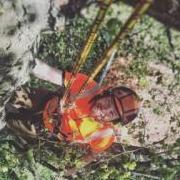-
Posts
371 -
Joined
-
Last visited
Personal Information
-
Location:
Norfolk
-
Interests
Music
-
Occupation
Consultant
-
City
Norwich
Recent Profile Visitors
7,242 profile views
JonnyRSA's Achievements
Proficient (10/14)
-
Rare
-
-
-
-
Recent Badges
-
JonnyRSA started following BS5837 Training - 2 Day Workshop
-
Hi all, I have been working on building a 2 day BS5837 workshop and will soon be ready to supply regular training to those who want to further their knowledge in "Trees in relation to design, demolition and construction – Recommendations" The course will cover: BS5837:2012. Plotting Trees (GPS/GNSS/Point to Point). Design Plans, OS Maps & Fixing Geospatial inaccuracies. Drone Imagery and Scaling. Recording tree data. Calculating RPAs. Root morphology in built, modified and arable environments. Modifying RPAs. Geospatial inacuracies. Tree Constraints Design. Scientific Report Layouts. Recommendations. Tree Protection. The course will be provided by Rooted Solutions Arboriculture Ltd and will be at EcoTherapy Farm, Norwich NR5 0TD. At this stage, I am looking for up to 5 participants whom I can use as "guinea pigs", ideally local to Norwich, so I can iron out any creases. I'm aiming for January 2026. If this is something you're interest in, then please register your interest via my website. Link embedded. Kind Regards, Jonny BS 5837 Tree Survey Training – 2-Day Course | Rooted Solutions — Rooted Solutions arboriculture WWW.ROOTEDSOLUTIONS.CO.UK Explore our comprehensive two-day arboriculture training courses focused on BS5837 standards, combining theory and practical exercises for professional development.
-
CedarDevUK started following JonnyRSA
-
Out on another airspade/root protection job today to expose a pipe for repair, running through a group of Blue Atlas root plates. Been using these slave units hooked up to a 32t chassis VacEx to remove the spoil to keep the weight down. Impressive things but a gruelling job. Luckily, weather was nice.
-
NHBC guidelines should consider the ultimate height of the tree and its zone of influence. The foundations of the garage to be constructed should be to the required specification based on the above-mentioned factors. If the root barrier is solid and linear to protect the garage, you may run the risk of roots girdling somewhere between 2-3m within one quadrant of the root plate. For a mature tree, it would be like having a wine glass with just under half of its base missing. Personally, Id allow the roots to deflect around the garage foundations. If the foundations are deep enough, then there should be no significant movement of the building, even in shrinkable soils.
-
JonnyRSA started following VTA Seminars with Prof. Dr. Claus Matteck
-
Got a 404 Error on the booking link.
-

Does anyone run another business? Or not do tree work full time?
JonnyRSA replied to Cordata's topic in Business Management
Yes, tree consultancy and root exploration mainly. -

Does anyone run another business? Or not do tree work full time?
JonnyRSA replied to Cordata's topic in Business Management
I run a few businesses while working full time. I’m predominantly an employed consultant most of the time, but on the side I run a small outfit with the Avant even though that’s pretty much been knocked on the head now. I also own a farm which works with charities and schools around animal centred wellbeing. I also do caravan collections/deliveries and other towing jobs with my truck. I have just set up another consultancy business to mop up some more local domestic work. None of my businesses brings in work everyday on their own, but collectively keeps me busy. -
Professional arboricultural consultant. Email: [email protected] Website: www.rootedsolutions.co.uk
-
It depends on soil structure and foundation depths. If you’re worried about the roots physically damaging the foundations, then I wouldn’t worry too much as they’ll most likely to deflect when they reach a hard surface. Only if there is a pre-existing crack with a source of moisture, will they exploit it. I’d check SoilScapes for a general idea of your soil structure, and then refer to the table of figures relating to the tree’s zone of influence within the relevant section of NHBC guidance (I think it’s 4.2 from memory). If the soil is clay, then there may be some subterranean movement, however, it doesn’t automatically mean it will damage the property. If you have no issue with the property so far, considering the overall size of the tree, then I would be confident that you won’t see many (if any) issues. In terms of robustness, as mentioned, there are prone to failure under load (snow, wind etc)
-
-
- 1
-

-
Do it!!! Now my starter culture is a lot stronger, I find that I can cut a few corners without spoiling the loaf. At first I had make levain and autolyse and get the hydration ratios just right. However, I can cut those steps out now and I just pour in un-fed discarded starter into the flour and water and I’m still getting the same results providing I’m leaving the dough to proof overnight as it takes longer to rise.
-
I hadn’t thought about using coffee grinder, but it makes sense. I take it, it works well to grind into flour?
-
I’ve joined a Sourdough forum so I can get mid-life crisis out of the way early, and I’ve seen people who mill their own flour. Certainly seems like a lot of effort but apparently the quality of the bread is incredible. I’ve just signed a long lease for 4 acres of land where I’m starting a permaculture farm in the new year and I will definitely be growing my own wheat to try it out.
-
I’ve been rumbled
-
-
I’ve recently been into making Sourdough bread. It’s surprisingly fun and addictive. I’m supplying my neighbours with all the excess loaves while I’m practicing. I got a little jar of Starter Culture from work as an early Christmas present. It’s one of those gifts in which I was going to give it a undignified death in the back corner of my fridge. However, I thought I’d give it go and make some bread. I was awful. Which I think spurred me on to make better loaves. I’m getting pretty consistent in making light, fluffy, well risen examples which I’m pretty proud of. I don’t know what has happened to me…
- 17 replies
-
- 13
-



















